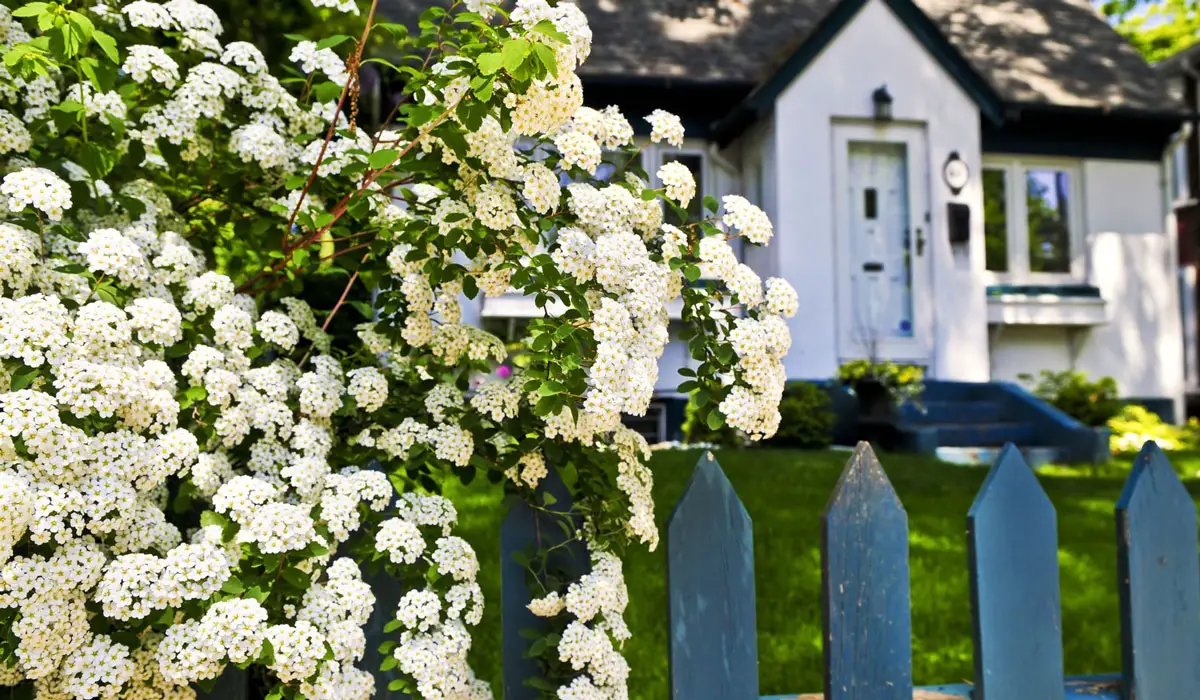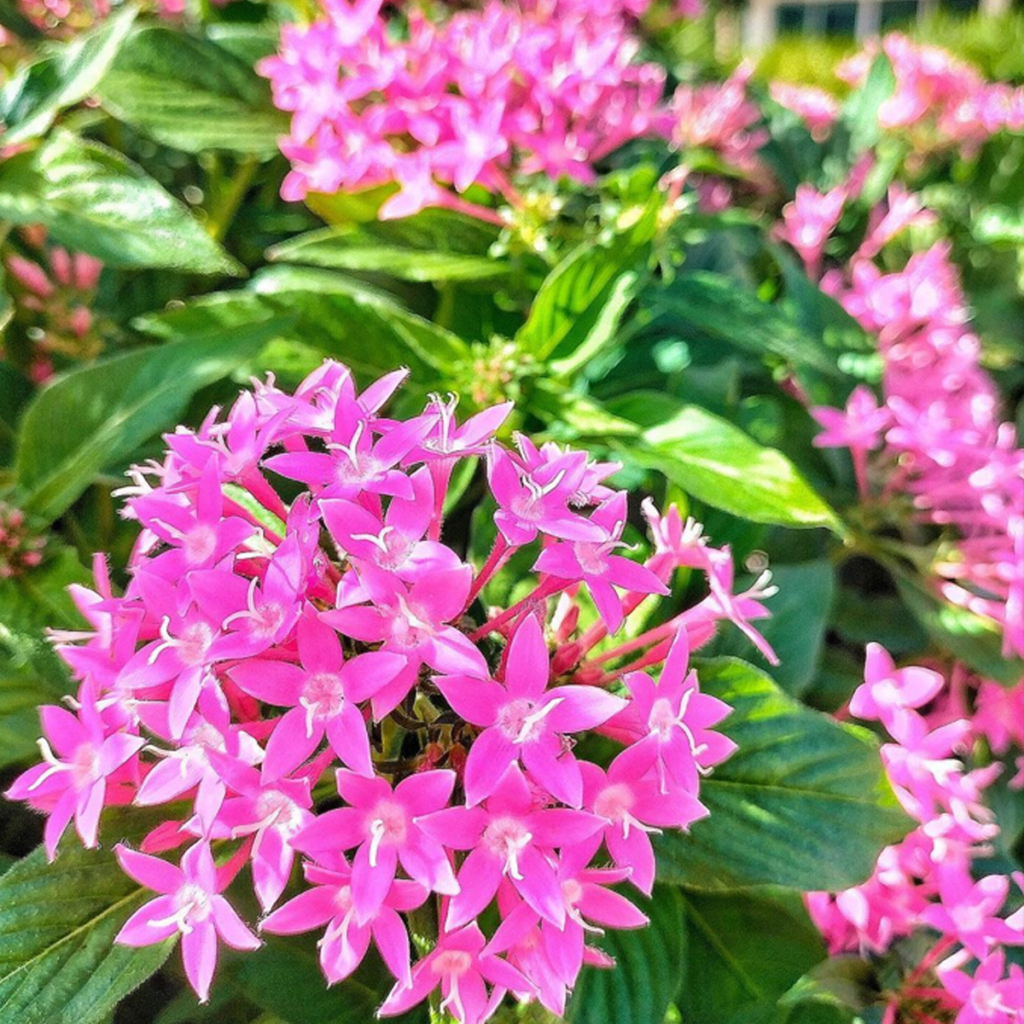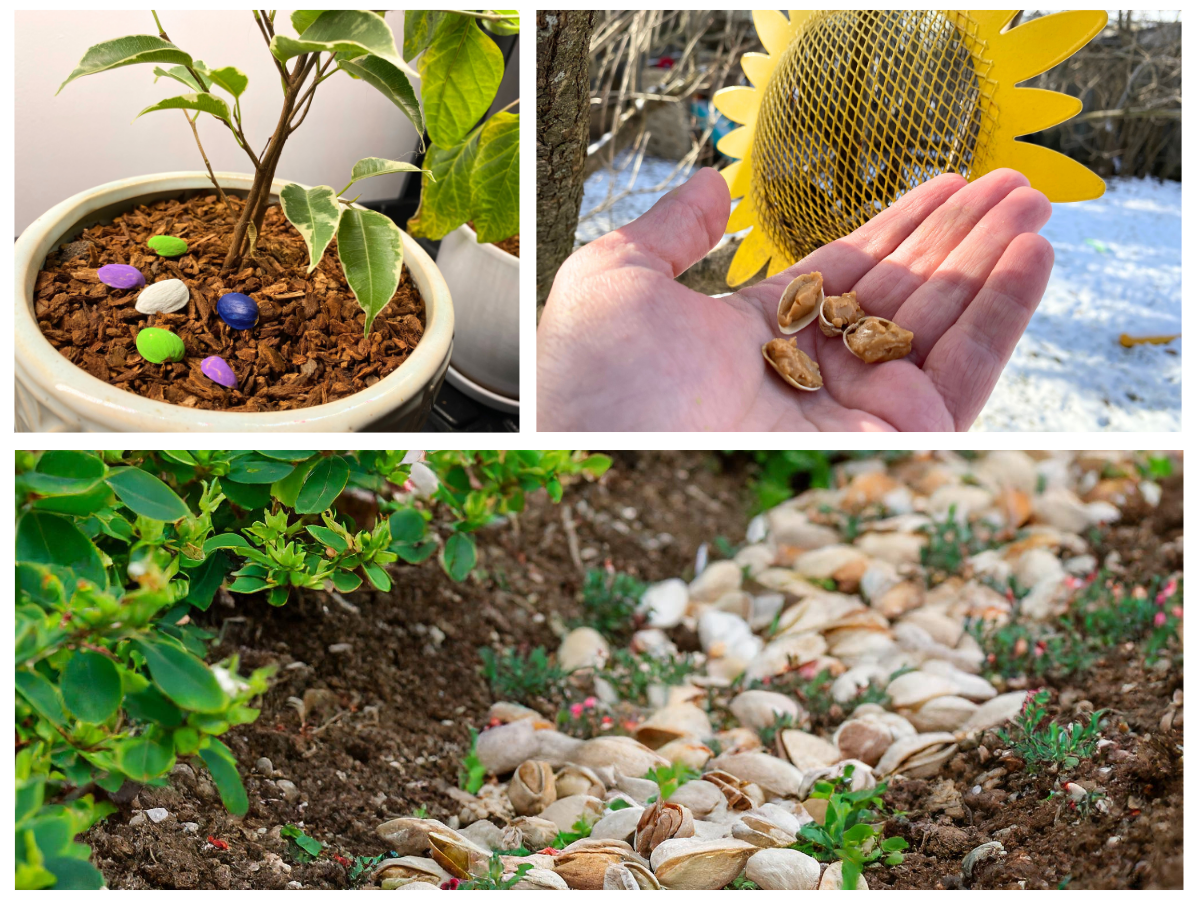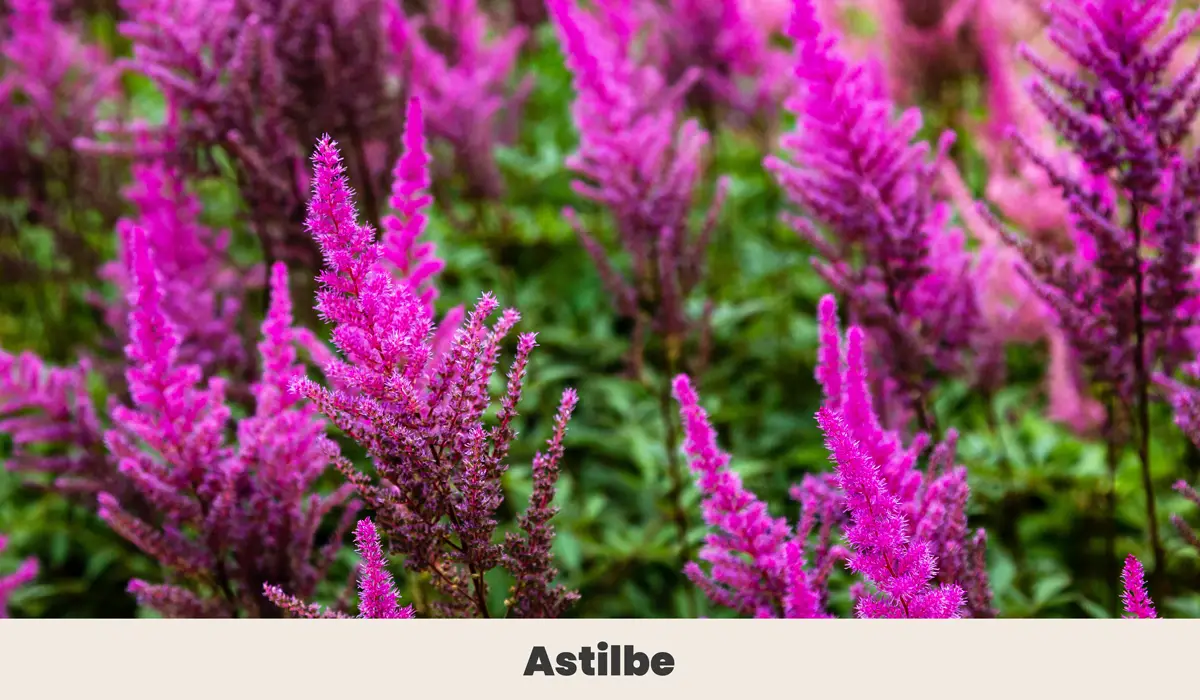11 Low Maintenance Flowering Bushes Infront of Your House

As the summer season draws near, you might be looking to spend more time in your garden. Gardening has many benefits both for your mental health and the environment, providing shelter and food to pollinators and wildlife.
If you’re like me and pretty active in the summer, you want plants that require little to no maintenance and can still look great.

Here’s a list of the top 11 low-maintenance flowers that bloom all summer and sometimes into the fall. All of these require little upkeep as long as they’re planted in the right environment.
Whether you’re interested in adding some Cape Jasmine or a stunning Butterfly Bush to your garden this summer, here’s a handy guide to taking care of them:
1. Cape Jasmine (Gardenia jasminoides)

Gardenia jasminoides, also known as Cape Jasmine, is an easy plant to care for.
It prefers full sun, however, it can tolerate (and should receive) some mild shade so the leaves don’t get too scorched. If they do, the leaves could fall off and they won’t look good during their normal blooming season.
If you’re fertilizing your plant, you should avoid using anything that contains too much nitrogen. This can affect the number of blooms it has.
Here’s a helpful guide to planting Cape Jasmine in your garden:
| Botanical Name: | Gardenia jasminoides |
| Growth Rate: | Up to 6’ tall and wide |
| Native Range: | China |
| Hardiness Zones: | 8-11 |
| Dangers: | Toxic to household pets and wildlife |
| Soil Needs: | Rich, moist, well-draining soil |
| Exposure: | Partial shade to full sun |
| Ease of Care: | Low-maintenance |
| Diseases: | Leaf spot, sooty mold, powdery mildew, and anthracnose |
| Propagation: | Divide plant during the summer |
| Fertilizer: | Fertilize in early spring and then once a month through early summer. |
| Pests: | Spider mites, aphids, whiteflies, and scales |
| Blooming Period: | If planted in a warm climate, all year long; if planted in cooler areas, the blooming period is between late spring – early summer |
| Pruning: | If plant has grown to 6’, trim down to 5’ feet after the flowers stop blooming |
| Water needs: | Water when the soil has completely dried out |
2. Azalea (Rhododendron)

Did you know that certain species of Azalea can grow up to 20’ tall? While most Azalea bushes stay at around 4-6’ tall, don’t be surprised to see this beautiful flower take off.
Though it is relatively easy to care for, you have to be mindful of how much sun exposure it’s getting.
Despite preferring full sun, too much sun exposure can actually burn the leaves. To offset this, it’s recommended that you add mulch to wherever you’re planting your Azalea plant.
If you’re ready to get started, here’s a helpful Azalea care guide:
| Botanical Name: | Rhododendron |
| Growth Rate: | Up to 20’ tall |
| Native Range: | North America |
| Hardiness Zones: | 6-9 |
| Dangers: | Non-toxic by touch, but can be deadly if swallowed in small amounts |
| Soil Needs: | Moist, well-draining soil |
| Exposure: | Full sun and partial shade |
| Ease of Care: | Low-maintenance |
| Diseases: | Flower blight |
| Propagation: | Propagate in either late spring or early summer |
| Fertilizer: | Apply fertilizer once a year as soon as the flowers bloom |
| Pests: | Leaf miners and lace bugs |
| Blooming Period: | Spring – fall |
| Pruning: | Prune once the flowers are finished blooming |
| Water needs: | If planted in a warm climate, water 1-2 times a week; if planted in a cool climate, water 2-3 times a month |
3. Spirea ‘Little Princess’ (Spiraea japonica)

One of the reasons why gardeners love Spirea is because it changes colors over the season, ranging in a variety of colors including pink, red, and purple flowers, and green or blue leaves. As such, Spirea is a huge show-stopper.
Keep in mind that, even though it is low maintenance, you’ll have to make sure it has the right conditions to grow in to prevent disease and pests, which Spirea is highly susceptible to.
In fact, spireas are susceptible to many of the diseases and insects that attack other rose family members, including leaf spot, fire blight, powdery mildew, root rot, aphids, leaf roller, and scale.”
You can combat these by making sure the plant always has well-draining soil and full sun. Here’s a helpful guide to keeping your Spirea alive and thriving:
| Botanical Name: | Spiraea japonica |
| Growth Rate: | Up to 6’ tall and up tp 7’ wide |
| Native Range: | Japan |
| Hardiness Zones: | 3-8 |
| Dangers: | Non-toxic |
| Soil Needs: | Well-draining loam |
| Exposure: | Full sun |
| Ease of Care: | Low-maintenance |
| Diseases: | Powdery mildew, leaf spot, and fire blight |
| Propagation: | Divide plant in the summer |
| Fertilizer: | Fertilize once a year in the fall after the leaves have fallen off |
| Pests: | Scale and aphids |
| Blooming Period: | Early – mid-summer |
| Pruning: | Prune plant back after the flowers have bloomed |
| Water needs: | Water once a week during the summer, then to keep the soil consistently moist |
4. Meyer Lilac (Syringa meyeri)

These gorgeous flowers are great for attracting pollinators to your garden, which can help everything else grow.
In addition to this, they are simply gorgeous to look at with their large pink and purple blooms. Plus, they can grow up to an impressive 8’ tall and 10’ wide, so they’re perfect to be used as garden borders or on the front/side of your house for decor.
Keep in mind that the Meyer Lilac can fall victim to a common fungal disease called Verticillium dahliae. Once it does, there’s no way to cure it.
However, you can combat it by regularly pruning the plant and making sure it has the right conditions to grow, including full sun and developing a root system in rich, well-draining soil.
Here’s what you need to know about taking care of Meyer Lilac:
| Botanical Name: | Syringa meyeri |
| Growth Rate: | Up to 8’ tall and up tp 10’ wide |
| Native Range: | Europe and Asia |
| Hardiness Zones: | 3-7 |
| Dangers: | Non-toxic |
| Soil Needs: | Rich, well-draining soil |
| Exposure: | Full sun |
| Ease of Care: | Low-maintenance |
| Diseases: | Verticillium dahliae, leaf spot, and powdery mildew |
| Propagation: | Divide the plant in the summer when there is new growth |
| Fertilizer: | Fertilize in the early spring when the plant starts to grow |
| Pests: | Scale |
| Blooming Period: | Spring – summer |
| Pruning: | Prune your plant as soon as it’s done flowering |
| Water needs: | Water once every 10-14 days while the flowers are blooming, then the plant only needs water when the soil is dry |
5. Chinese Fringe Flower (Loropetalum chinense)

This evergreen shrub with bright reddish-pink flowers makes the perfect centerpiece of your garden or when planted up against your fence. Best of all, it’s incredibly easy to grow and will require very little upkeep from you.
In fact, the Chinese Fringe Flower is called this because the petals are very stringy, similar to the way fringe looks.
In regards to proper care, it’s recommended that you add mulch around the plant’s roots to help combat weed growth.
Furthermore, they require little to no pruning because they naturally develop a pretty shape. However, if you want to prune your Chinese Fringe Flower, do so either in the spring or fall.
Here’s an overview of how to care for the Chinese Fringe Flower:
| Botanical Name: | Loropetalum chinense |
| Growth Rate: | Up to 15’ wide |
| Native Range: | Asia |
| Hardiness Zones: | 7-9 |
| Dangers: | Non-toxic |
| Soil Needs: | Rich, well-draining soil |
| Exposure: | Partial to full sun |
| Ease of Care: | Low-maintenance |
| Diseases: | Root rot and anthracnose |
| Propagation: | Divide plant in either the spring or summer |
| Fertilizer: | Apply a slow-release fertilize once in the spring if you wish to do so, otherwise fertilizer is not required unless planted in poor soil |
| Pests: | Spider mites |
| Blooming Period: | Spring |
| Pruning: | Not required |
| Water needs: | Only water once every 2 weeks if you live in an area with little rainfall |
6. Dwarf Virginia Sweetspire (Itea virginica)

One of the most interesting things about the Dwarf Virginia Sweetspire is that it can actually grow really well in wet, swampy areas.
In fact, it’s not uncommon to find this plant growing in heavily forested areas or near streams. So, if you live in or near wetlands, this would be an excellent plant to add to your garden.
While this plant requires little pruning, if you do so, make sure not to remove more than 30% of the top, as this will stunt growth the following season.
Here’s everything you need to know about caring for the Dwarf Virginia Sweetspire:
| Botanical Name: | Itea virginica |
| Growth Rate: | Up to 10’ tall |
| Native Range: | United States |
| Hardiness Zones: | 5-9 |
| Dangers: | Non-toxic |
| Soil Needs: | Moist, well-draining soil |
| Exposure: | Full sun and part shade |
| Ease of Care: | Low-maintenance |
| Diseases: | Not applicable |
| Propagation: | Divide plant in either in late spring or late summer |
| Fertilizer: | Apply fertilizer during the spring |
| Pests: | Not applicable |
| Blooming Period: | Early spring – early summer |
| Pruning: | Prune the plant after the flowers have bloomed |
| Water needs: | Water once a week while growing, then regularly to keep the soil moist |
7. Camellia (Camellia japonica)

If you plant Camellia in your garden, the good news is that you can expect the flowers to bloom again next year. These plants typically bloom for a full four weeks anytime between March and October, depending on several factors such as location.
When in bloom, you’ll be able to enjoy small circular, red flowers that look very close to roses. These are stunning flowers that thrive in well-draining, slightly acidic soil conditions.
Here’s everything you need to know about taking care of these flowers:
| Botanical Name: | Camellia japonica |
|---|---|
| Growth Rate: | Up to 12’ tall |
| Native Range: | Japan and China |
| Hardiness Zones: | 6-10 |
| Dangers: | Non-toxic |
| Soil Needs: | Well-drained, acidic soil |
| Exposure: | A mix of full sun and partial shade |
| Ease of Care: | Low-maintenance |
| Diseases: | Leaf blight and root rot |
| Propagation: | Divide plant in the summer |
| Fertilizer: | Fertilize once in spring and summer |
| Pests: | Caterpillars, scales, aphids, and spider mites |
| Blooming Period: | Early spring – fall |
| Pruning: | Trim the plant after the flowers have finished blooming |
| Water needs: | Water once a week if there is no rainfall, then water every other week all other times |
8. Peony (Paeonia)

Everyone loves peonies and for good reason – they are absolutely gorgeous and super easy to care for, making them the best flowers for beginning gardeners.
They do best when exposed to a minimum of six hours of sun per day, as well as being planted in very rich, well-draining soil.
Here’s how to care for these stunning flowers:
| Botanical Name: | Paeonia |
| Growth Rate: | Up to 3’ tall and up to 4’ wide |
| Native Range: | North America |
| Hardiness Zones: | 3-7 |
| Dangers: | Toxic |
| Soil Needs: | Fertile, well-draining soil |
| Exposure: | Partial sun |
| Ease of Care: | Low-maintenance |
| Diseases: | Botrytis blight |
| Propagation: | Divide the plant during the fall |
| Fertilizer: | Fertilize once in the spring before new growth emerges and then again in the fall |
| Pests: | Hoplia beetles |
| Blooming Period: | Spring and early summer |
| Pruning: | Trim in the fall when the blooms have died |
| Water needs: | Water when the soil has dried out |
9. Summersweet Clethra (Clethra alnifolia)

The Summersweet Clethra is a visually-stunning plant with tall cone-like flowers that bloom either pink or white.
Though it can withstand shade and full sun, it will bloom best when it gets partial sun, especially if it’s growing in a warmer climate.
Check out this helpful care guide below:
| Botanical Name: | Clethra alnifolia |
| Growth Rate: | Up to 6’ tall and wide |
| Native Range: | United States |
| Hardiness Zones: | 3-9 |
| Dangers: | Non-toxic |
| Soil Needs: | Well-draining, acidic clay |
| Exposure: | Partial sun |
| Ease of Care: | Low-maintenance |
| Diseases: | Pseudocercospora leaf spot |
| Propagation: | Divide plants in early summer |
| Fertilizer: | Apply a slow-release fertilizer in early spring |
| Pests: | Spider mites |
| Blooming Period: | Late summer |
| Pruning: | Not required |
| Water needs: | Water so the soil is consistently moist, but not soaking wet |
10. Butterfly Bush (Buddleja)

As the name suggests, Butterfly Bushes commonly attract butterflies due to their nectar. If you’re thinking of planting this low-maintenance bush, be prepared that it can get pretty big – up to 12 feet tall!
It only really needs watering once a week while the roots are being established. This process usually takes about a year. After that, the plant requires little upkeep, as it rarely suffers disease or pest infestation.
Here’s how to take care of your newly-planted Butterfly bush:
| Botanical Name: | Buddleja |
| Growth Rate: | Up to 12’ tall |
| Native Range: | China |
| Hardiness Zones: | 5-10 |
| Dangers: | Non-toxic |
| Soil Needs: | Well-draining, moist soil |
| Exposure: | Full sun |
| Ease of Care: | Low-maintenance |
| Diseases: | Phytophthora |
| Propagation: | Propagate either in the spring or early summer |
| Fertilizer: | Fertilize once in early spring, late spring, and early summer |
| Pests: | Spider mites and aphids |
| Blooming Period: | Summer – early fall |
| Pruning: | Trim the plant in the spring once new growth appears |
| Water needs: | Water once a week until roots are established |
11. Hydrangea (Hydrangeaceae)

These low light plants have different colored flowers depending on the type of soil they’re grown in.
If you want pretty pink blossoms, be sure to plant them in soil that has a pH of 6.5 or higher. For blue blooms, plant in acidic soil with a pH of 5.5 or lower.
Hydrangea makes gorgeous additions to any landscape, especially due to how big they get. Here’s what you need to know about caring for them:
| Botanical Name: | Hydrangeaceae |
| Growth Rate: | Up to 12’ tall |
| Native Range: | United States |
| Hardiness Zones: | 3-7 |
| Dangers: | Toxic |
| Soil Needs: | Heavy clay that has organic compost added to it, but they can adapt to different types of soil |
| Exposure: | Partial sun |
| Ease of Care: | Low-maintenance |
| Diseases: | Cercospora leaf spot and botrytis blight |
| Propagation: | Propagate plant between spring and late summer |
| Fertilizer: | Fertilize in early spring |
| Pests: | Black vine weevils, Japanese beetles, aphids, and deer |
| Blooming Period: | Mid-spring to early fall |
| Pruning: | Prune just above the bud in either spring or late winter |
| Water needs: | Water 3 times a week until deep roots are established; water in the morning, where possible |
Final Thoughts
All of the plants mentioned here are going to bloom all summer long, as well as the following season. Creating the garden of your dreams is possible with this list of incredibly low maintenance plants.
With this helpful guide, you’ll be on your way to manifesting the perfect garden and landscape this summer season.




